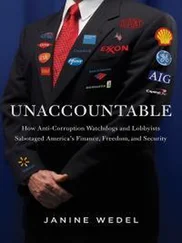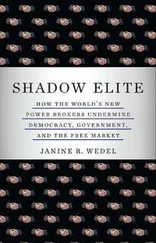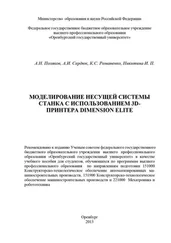Ranulph Fiennes - Killer Elite
Здесь есть возможность читать онлайн «Ranulph Fiennes - Killer Elite» весь текст электронной книги совершенно бесплатно (целиком полную версию без сокращений). В некоторых случаях можно слушать аудио, скачать через торрент в формате fb2 и присутствует краткое содержание. Жанр: Триллер, на английском языке. Описание произведения, (предисловие) а так же отзывы посетителей доступны на портале библиотеки ЛибКат.
- Название:Killer Elite
- Автор:
- Жанр:
- Год:неизвестен
- ISBN:нет данных
- Рейтинг книги:3 / 5. Голосов: 1
-
Избранное:Добавить в избранное
- Отзывы:
-
Ваша оценка:
- 60
- 1
- 2
- 3
- 4
- 5
Killer Elite: краткое содержание, описание и аннотация
Предлагаем к чтению аннотацию, описание, краткое содержание или предисловие (зависит от того, что написал сам автор книги «Killer Elite»). Если вы не нашли необходимую информацию о книге — напишите в комментариях, мы постараемся отыскать её.
Killer Elite — читать онлайн бесплатно полную книгу (весь текст) целиком
Ниже представлен текст книги, разбитый по страницам. Система сохранения места последней прочитанной страницы, позволяет с удобством читать онлайн бесплатно книгу «Killer Elite», без необходимости каждый раз заново искать на чём Вы остановились. Поставьте закладку, и сможете в любой момент перейти на страницу, на которой закончили чтение.
Интервал:
Закладка:
Amr bin Issa, Sheikh of the Bait Jarboat tribe in Dhofar, was not a happy man. At forty-seven he was envied by many of his fellow jebalis, mountain tribesmen, for he was rich-richer than most jebalis could imagine.
As a seventeen-year-old Amr had left home with an uncle and sailed the Gulf waters in sardine dhows. For a while he worked as a gardener in Bahrain and as a delivery courier around town using a Lambretta moped. He had a keen eye for business and took advantage of the newfound wealth of the United Arab Emirates to set up a grocery and hardware shop in Dubai. A retail chain of Woolworth’s lookalikes then evolved, second only to Khimji Ramdas in size and profitability.
Amr had married young, for he had a strong sexual appetite. His first wife was a great disappointment to him. She was an orphan girl who, like the majority of Dhofari women, had been brutally circumcised soon after birth. Her clitoris had been removed and, with it, most of her sensuality. Two sons were born who remained with their mother when Amr divorced her and went abroad. She remarried a man from the Bait Antaash and Amr rarely saw the two boys. Nonetheless they remained the blood of his blood.
His second marriage was altogether different. At the age of twenty-four he stopped off at an island on a fishing voyage and fell in love with a fourteen-year-old Shahra girl, Shamsa. Even before he discovered that her sexuality was intact he had determined to marry her, for to him she seemed the most alluring creature on earth.
The Shahra ranked low in the strict tribal hierarchy of Dhofar. Once the most powerful tribe in the land, they had borne the brunt of a century’s fighting against Portuguese invaders. Greatly weakened, the Shahra gradually became subjugated to the Qara tribes until they were “nontribe,” losing the right to carry weapons and working only as serfs to the Qara in return for security. Shahra men could not take wives from the master tribes although the women, lighter-skinned than most Dhofaris, were available to all as brides at especially low prices.
Out of a powerful sexual bond grew a friendship and trust that was rare in Dhofari marriages. Shamsa bore Amr four sons over the next seven years. Amr was a proud husband and father, a successful businessman and popular within the Bait Jarboat tribe when, in 1970, their sheikh died without a hereditary successor. The dead leader had spent much of his life avenging the tribe’s honor following a series of raids which had decimated and impoverished them in the 1940s. There was great contention among the Bait Jarboat about who should succeed him. Those of the tribe associated with the hard-core communists of the PFLO had their champion, while the nonatheistic majority favored Amr, whose great wealth, personal wisdom and family connections were held in high esteem. Amr won and became sheikh.
Like most of his countrymen, from sheikh to humble wood collector, Amr and his sons fought with the PFLO for the freedom of Dhofar. One of his sons was killed in 1969, a second in 1972 and yet another in January 1975, all at the hands of the government forces. In accordance with the tribal tradition of thaa’r, or revenge, it was Amr’s duty to avenge himself for the killing of his sons.
For three years, with the war at its height, the newly appointed Sheikh Amr did his best for the tribe, leaving his business concerns to his managers in the Gulf. In Dubai he was an extremely wealthy man, but on the jebel he lived much the same sort of life as other jebalis .
In 1974 Shamsa had conceived unexpectedly and, following a fall while she was driving their goats over the hill pastures, had died in childbirth. Amr was stunned. His tribal duties lost their importance to him. His popularity slowly waned and the machinations of his opponents stirred accordingly. A cousin named Hamoud, envious of Amr’s position, used Amr’s failure to fulfill the thaa’r and avenge the deaths of his three sons as fuel to rouse tribal sentiments against him.
Fundamentalist Islamic law embraces various rules, or sharia, but by far the most binding for a Dhofari are those of thaa’r. The aggrieved relative is expected by law to insist on an eye for an eye. In return for murder, execution. For manslaughter, blood money. No time limit is set on the deed of vengeance. It can take place forty years on, but the executor must show his intention clearly and act as circumstances allow.
There are many different applications of the thaa’r even within a single Islamic country, because the dictates of the Koran simply reflect, in a modified form, the principles of pre-Islamic tribal behavior. If among the elders of a tribe there is dissension as to how the hadiyth, the Prophet’s sayings, should be applied, then a consensus of opinion, ijma’, can produce any solution. Over the years the differences in the severity with which Koranic punishments are applied in different lands have increased greatly. Sunni, Shi’ite and, in Oman, Ibadi Muslims apply further differences as a result of their own considerable divergences within the body of Islam.
Sudan is a Muslim country but the thaa’r there has become all but nonexistent. In 1988 five Palestinian terrorists murdered two Sudanese and five British peace workers in a Khartoum hotel. They were arrested and the Sudanese government contacted the parents of the dead Britons through the Foreign Office. A middle-aged suburban couple in Britain were suddenly faced with the choice of whether they wished their child’s murderers to be executed, fined or pardoned. They were unable to make up their minds, and all five terrorists were released from jail in January 1991. In Dhofar Sultan Qaboos has had enormous success in subduing the thaa’r, to the extent that there were more tit-for-tat killings in Northern Ireland in 1990 than there were thaa’r murders in Dhofar. But the hard-core believers merely bide their time.
In July 1990 a jebali civil servant, a long-since pardoned member of the PFLO, was commuting to his air-conditioned office in Salalah in his air-conditioned Mercedes. He stopped at a zebra crossing to allow a pedestrian to pass. Over the past twelve years the two men had often passed each other in the street. That morning something snapped in the mind of the civil servant and he rammed the pedestrian against a wall, seriously injuring him. He was sent to jail, having readily admitted his intention to kill the man, who had murdered his
brother back in 1973.
In 1976 a Dhofari lieutenant revealed to Tony Jeapes, SAS (Special Air Service) commanding officer, that he expected to be killed according to thaa’r for the chance shooting, two years previously, of his firqat sergeant-major. The lieutenant often encountered the man asked by the late sergeant-major’s family to kill him. This man was always friendly and they shook hands whenever they met, but both knew that one day, when the time was ripe, one would try to kill the other. The lieutenant had not actually shot the sergeant-major, and no one thought that he had, but the real murderer had escaped to Yemen, and the lieutenant, as picket lieutenant and therefore the man locally in charge on that fateful night, was held responsible.
The thaa’r system was to cause Sheikh Amr a great deal of trouble.
On April 7, 1975, Amr was seventy miles to the northwest of his home, at the oasis of Shisr. A message reached him that day that was to change, or end, many lives over the next fifteen years.
Arabia’s central feature, the Empty Quarter, is the greatest sand desert in the world. Six-hundred-foot-high dunes, constantly on the move, make up much of the sweltering landmass of Oman and Saudi Arabia. The dunes tail away a day’s journey by camel to the north of Shisr and the oasis is, to many desert nomads, the most wonderful place on earth. To the few urban Omanis or Europeans who reach it, Shisr is a fly-blown outpost on the edge of nowhere.
Читать дальшеИнтервал:
Закладка:
Похожие книги на «Killer Elite»
Представляем Вашему вниманию похожие книги на «Killer Elite» списком для выбора. Мы отобрали схожую по названию и смыслу литературу в надежде предоставить читателям больше вариантов отыскать новые, интересные, ещё непрочитанные произведения.
Обсуждение, отзывы о книге «Killer Elite» и просто собственные мнения читателей. Оставьте ваши комментарии, напишите, что Вы думаете о произведении, его смысле или главных героях. Укажите что конкретно понравилось, а что нет, и почему Вы так считаете.












